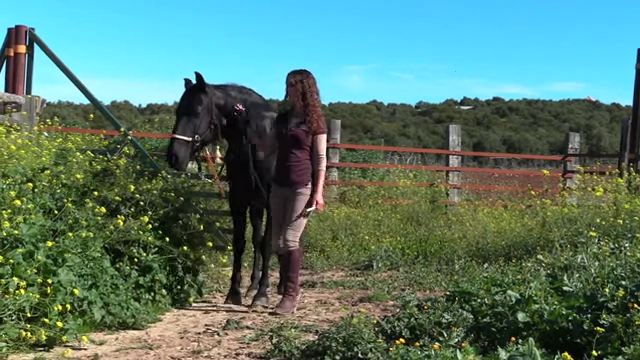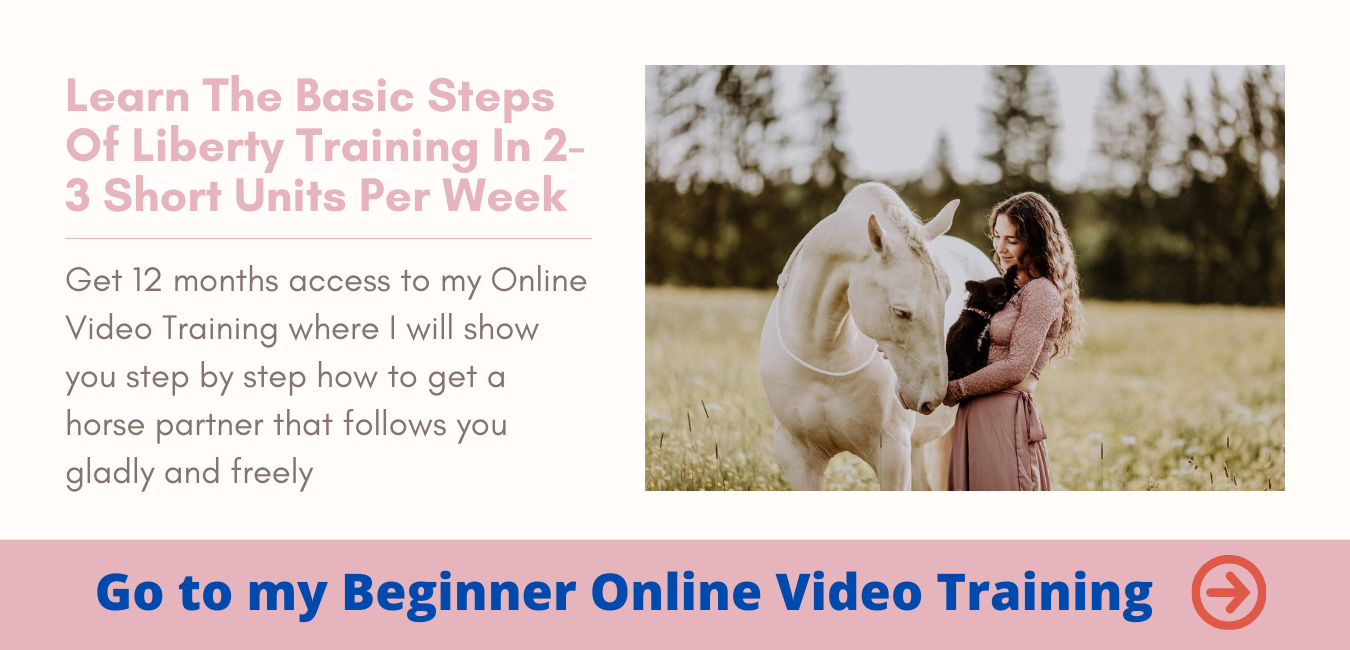Today, I’d like to give you a few tips and background information on how you should get your horse out of the paddock.
Have you ever run after your horse this year without success?
Depending on whether your horse is one of the sly ones or not, the unaccustomed freedom in the paddock – if he is not lucky enough to be in the paddock all year round – can make it more difficult to get your horse out of the paddock.
Especially if the time in the green grass is very limited.
It’s all about how you APPROACH your horse
Sensitive horses in particular often perceive us and our body language with much more attunement than we are often aware of.
In fact, the way you approach your horse could be a reason for your horse to seek its avoidance in flight, OR it can be the reason your horse allows you to approach it with total ease 😉
How Horses Approach One Another
Polite horses never approach each other head-on, but always in an arc towards the shoulder.
It is important that you do not “hurl” your body energy at your horse, but approach him in a relaxed and balanced manner.
When greeting your horse, get into the right frame of mind.
See what time of mood your horse is in today. And be as respectful as you would like your horse to be.
You can’t even get to your horse?
One main cause may be that during the time of grazing, your horse has learned that grazing is over as soon as the human approaches.
In other words, your horse has been conditioned to associate you coming near him or her with the ending of grazing. The horse is avoiding this from happening by disallowing you from being near each other.
[su_youtube url=”https://youtu.be/FQCo2yiztgo”]
Do This Instead
It is much more sensible to go to your horse from time to time, to stroke it briefly, to stand next to it and enjoy the relaxed time together, and then to go away again – even several times for a few minutes in a row.
The fact that the human comes and goes should become a routine for your horse – and not a sign of “grazing over” 😉
If you finally tie up your horse, it makes sense to stand still for a minute or two with your horse on the rope and let him continue to graze.
This is so that he doesn’t learn that the fun is over as soon as you let a human get close to him.
You should take this one minute of peace and quiet and “eat grass together” as often as possible so that you don’t establish a counterproductive link to your appearance.
Try the “Approach Game”:
If your horse reacts extremely sensitively to your approach, you can start with a little “approach game”.
Timing is extremely important here – so watch your horse carefully and be quick. The fewer “mistakes” you make, the more effectively your horse will learn.
Now walk in an arc towards your horse’s shoulder and watch carefully when he starts to tense up.
Before he moves or runs away, stop, pause briefly and then turn around and walk away again.
Even if you don’t touch your horse, you build up “pressure” which you take away again when your horse shows the desired behaviour – to stop – by walking away again.
With this “game” you now swing yourself closer to your horse bit by bit.
By the way, it doesn’t matter what “closer” means to your horse – there can be a distance of 2, 5 or 20 metres between you.
Often it also helps if you make yourself comfortable at the distance that feels good for your horse and “just be there”.
It is important that you always go quite close to your horse’s border, to the threshold just before he would run away, in order to actually get closer at some point.
Because with this “approach game” you move this boundary step by step – and teach your horse that an approach does not necessarily mean the end of grazing.
If you do manage to get close to your horse with this method, please don’t tie him down directly.
Pet it briefly and then go away again.
This will break the vicious cycle that we have seen so far.
When you tie up your horse, take your time and let him graze on the rope.
Of course, I am aware that you only have a little time at the beginning, especially when grazing, but you should definitely take this minute for long-term success.
Otherwise, it is better to let your horse graze on the rope at the beginning until the time is sufficient to achieve a positive training effect.
How you proceed always depends on the character of your horse and its level of training.
For example, does he already have difficulties getting involved with you on the rope and tends to pull you around?
Then it’s best to take a step back and first practise with your horse that you decide when to eat and when it’s time to move on.
If you also find this difficult because your horse hardly reacts to your signals, you might even take a step back and first practise from the ground (without grass as a distraction) that your horse gives way to you and that it can be fun to listen and work together on different lessons.
Approach and retreat – timing is everything!
If all this works and your horse still consistently runs away from you in the meadow, it now only helps to make the right behaviour as pleasant as possible for him – and the undesired behaviour unpleasant.
However, the aim is of course to work as positively as possible with your horse – after all, you should have fun together as often as possible.
If it follows you, you touch it briefly and let it eat again.
In this case, however, your horse does not have to follow you because this is not a “following exercise” in the classical sense, but your horse should “only” let you pick him up from the grass without running away from you.
You can also go directly to your horse, stroke him briefly and then let him eat again.
Many horses are very irritated at the beginning of the exercise and you actually have to give them a few metres of air again before they continue eating.
It is important that you really let them eat again – because only then will your horse learn that it will reach the desired goal (eating grass) if it simply stops and lets you come into its area.
It is best to repeat the “approach game” several times – and if your horse runs away, let him turn until he lets you approach him and then go away again.
If you actually want to leave the paddock, you tie your horse to the rope and let him eat for another two minutes before you actually leave.
Most horses understand this principle very quickly.
It is often much more difficult for us humans to be good at timing and rewarding the right behaviour by approaching or retreating. So be patient with your horse – but also with yourself 😉
All the love,
Yours, Kenzie




